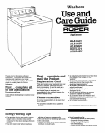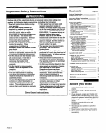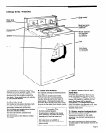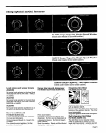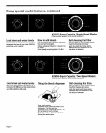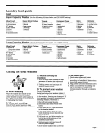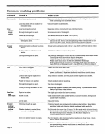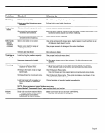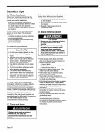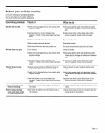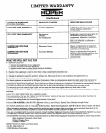
Laundry tips
A. Water hardness
Many poor washing results can be
traced to wash water hardness. To
check your water hardness:
Ask your city water company or
Cooperative Extension Service Office
(for well water) for the mineral
content in grains-per-gallon or parts-
per-million.
If your water is 9 or more grains-per-
gallon or more than 153 parts-per-
million:
-
consider installing a water softener.
- use more detergent.
- use a packaged, non-precipitating
water conditioner.
- Do Not use soap.
B. Laundry products
Laundry Tip
m Do Not use oxygen bleach in the
bleach dispenser. Clogging can
occur.
. Always dilute fabric softeners
with l/2 to l-cup (125 to 250 mL)
warm water. Undiluted fabric
softener can stain fabrics.
. Use fabric softeners only in deep
rinse.
. Do Not mix fabric softeners with
other laundry products.
l
Too much fabric softener can
make some items non-absorbent
(like diapers and towels). If this
happens, use less fabric softener
or don’t use it every time.
For best results when using soap,
detergent, chlorine or oxygen bleach,
fabric softeners, pretreatment or
enzyme laundry products, packaged
water conditioners, bluing, ammonia or
starch, follow the package instructions.
Service or performance problems
caused by the use of any product not
manufactured by Whirlpool Corporation
are the responsibility of the
manufacturer of that product.
C. Tints and dyes
Washer parts such as agitator,
washer lid, etc. may be
permanently stained by the dye
color.
Follow package directions for tints and
dyes; then, when you are finished . . .
1. Put chlorine bleach and detergent
in the washer.
2. Run through a complete cycle using
hot water.
3. Repeat if staining occurs on
following loads.
D. Stain removal guide
I
Fire Hazard
I
. Never put dry-cleaning solvents
or fluids directly into your
washer.
’ Never put items treated with
solvents in your washer until
they have been completely
rinsed and air dried. The fumes
from these solvents can create a
fire or explosion.
. Treat stains when they are fresh.
Old or set stains may not come out.
. Before treating check:
- type of stain.
- fabric label and how colorfast it is.
- how old the stain is.
m Use cold or warm water first. Hot
water can set some stains.
. Use bleach that is safe for fabric.
Dilute chlorine bleach.
. Test stain remover products on
inside seam or hidden comer of item
to check colorfastness.
fl Put stained area face down on paper
towel or white cloth. Apply stain
remover to back of stain to force the
stain off the fabric instead of
through it.
m Use meat tenderizer or enzyme
presoaks for easier removal of some
protein stains.
m Use dry cleaning solvents in a well
ventilated room.
. For specific stain removal
recommendations, ask your
Cooperative Extension Service Office
or consult a public utility home
economist.
Page 10



